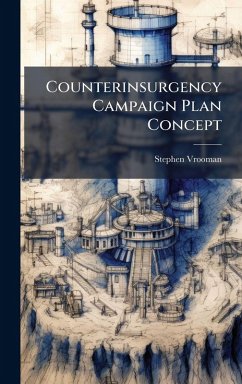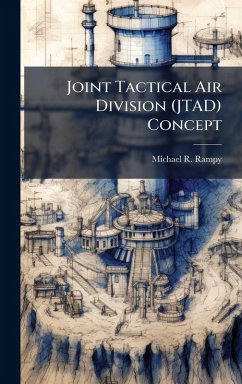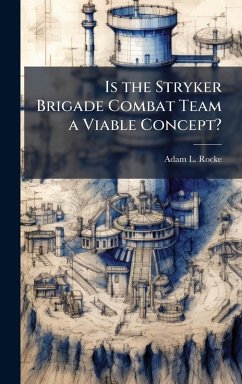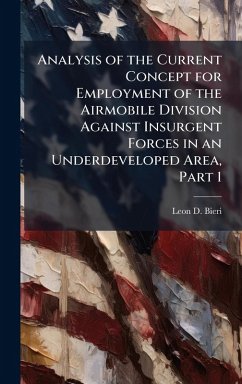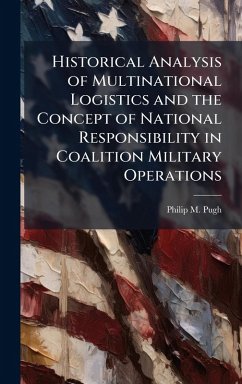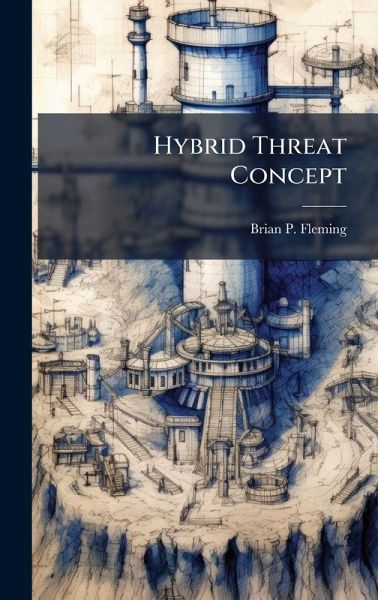
Hybrid Threat Concept
Versandkostenfrei!
Versandfertig in über 4 Wochen
28,99 €
inkl. MwSt.
Weitere Ausgaben:

PAYBACK Punkte
14 °P sammeln!
Hybrid threat actors seek to master unrestricted operational art in order to reconcile overmatch and protect or advance their interests. As interest-based rational actors, hybrid threats translate strategic intent into unrestricted distributed operations. The hybrid threat concept represents the evolution of operational art and a potential paradigm shift as a doctrinal and organizational Revolution in Military Affairs (RMA). Baptized in its modern form after the 1991 Gulf War, the hybrid threat construct is a sophisticated amalgam of unrestricted threat activities that have resisted codificati...
Hybrid threat actors seek to master unrestricted operational art in order to reconcile overmatch and protect or advance their interests. As interest-based rational actors, hybrid threats translate strategic intent into unrestricted distributed operations. The hybrid threat concept represents the evolution of operational art and a potential paradigm shift as a doctrinal and organizational Revolution in Military Affairs (RMA). Baptized in its modern form after the 1991 Gulf War, the hybrid threat construct is a sophisticated amalgam of unrestricted threat activities that have resisted codification and generated a labyrinth of contradictory explanation. As an unrestricted collective methodology, the hybrid concept bypasses the cognitive boundaries of traditional threat characterization and the application of organized collective violence. United States military operational and strategic planners who choose to ignore emerging hybrid threats or meet them with intellectual contempt are accepting strategic risk, as they aim to set conditions for strategic opportunity and prevent the U.S. tendency to dominate the battlefield. This study demonstrates the tendency for hybrid threat actors to increase in frequency and diversity of ways and means in the pursuit of their interests in the next decade. The hybrid threat construct offers a framework to describe the evolving character of contemporary threat actors, challenge conventional threat assessment methodologies and understand the anomalies in the contemporary operating environment. As such, the hybrid construct presents numerous implications for visualizing the future operational environment and for how the U.S. military will formulate strategy, policy and resource investment priorities in the near future. This work has been selected by scholars as being culturally important, and is part of the knowledge base of civilization as we know it. This work was reproduced from the original artifact, and remains as true to the original work as possible. Therefore, you will see the original copyright references, library stamps (as most of these works have been housed in our most important libraries around the world), and other notations in the work. This work is in the public domain in the United States of America, and possibly other nations. Within the United States, you may freely copy and distribute this work, as no entity (individual or corporate) has a copyright on the body of the work. As a reproduction of a historical artifact, this work may contain missing or blurred pages, poor pictures, errant marks, etc. Scholars believe, and we concur, that this work is important enough to be preserved, reproduced, and made generally available to the public. We appreciate your support of the preservation process, and thank you for being an important part of keeping this knowledge alive and relevant.





